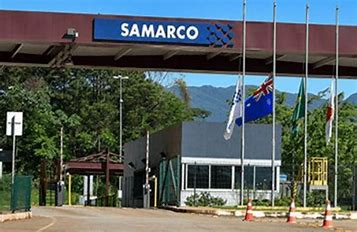Leader in sales volume of over-the-counter drugs expanded more than 20% in 2021
11/03/2022
/i.s3.glbimg.com/v1/AUTH_37554604729d4b2f9f3eb9ad8a691345/internal_photos/bs/2022/8/m/XhBAfATTmxb7TuWbGBXw/100322jose17.jpg)
Jose Roberto Lettiere — Foto: Silvia Zamboni/Valor
Cimed, Brazil’s leader in OTC drugs in sales volume, grew twice as much as the country’s market for drugs last year and intends to repeat this performance in 2022. “There are still many open variables, but the plan is to grow stronger,” Chief Financial Officer José Roberto Lettiere said.
In 2021, while the Brazilian market grew 11%, according to data from the consultancy IQVIA, which audits retail pharmaceuticals, Cimed’s net revenue grew more than 20%.
According to Mr. Lettiere, heated demand for medicines and vitamins amid the Covid-19 pandemic and its sales mix allowed the pharmaceutical company to advance in revenue and return on capital employed, despite the challenges in the global supply chain, the impact of currency devaluation in costs and greater global competition for raw materials — the active pharmaceutical ingredients (APIs) used in the country are mostly imported, from China and India.
“We realized that Europe was starting to face logistical problems at the end of 2020 and we moved up the purchase of raw materials to avoid disruption,” the executive said. The challenges remained in 2021. But the vertical operating model, the focus on operating costs and agile management helped to protect the financial statement, he adds.
In the year, while the company’s net revenue grew 20.3% to R$1.58 billion, the cost of goods sold (COGS) advanced 27.6% to R$773.8 million. Recurring EBITDA rose 30.7% to R$403 million, with a margin of 25.5%, compared to 23.4% in 2020.
Net income for the year fell 15.1%, to R$242.8 million, pressured by the financial result and expenses related to the implementation of the new plant in Pouso Alegre (Minas Gerais) and the simplification of the company’s corporate structure. On the other hand, recurring net income rose 16.4% to R$255.1 million and ROCE increased five percentage points to 47.2%.
According to Mr. Lettiere, there are no IPO plans on the table right now. But Cimed could tap the capital market to finance an eventual more aggressive growth project. “Cimed wants to be the largest pharmaceutical company in Brazil. If it is necessary to go to the market for this, it will be studied,” the executive said.
At the beginning of the year, logistical challenges persist and the demand for medicines grew even faster, particularly anti-flu and anti-allergic drugs, given the advance of the omicron variant and the circulation of a new influenza virus, H3N2, in the country. But there were no problems in accessing raw materials to meet the demand, according to Mr. Lettieri.
Cimed has already obtained approval from health regulator Anvisa to transfer the production of medicines to the new factory in Pouso Alegre, in a process likely to be completed by the third quarter. With the unit, which has already received investments of R$300 million, Cimed doubles its solid production capacity, to 240 million units (boxes) per year.
In addition, R$300 million are set aside for the manufacturing complex over the next five years, increasing production capacity in other product lines.
Source: Valor International

/i.s3.glbimg.com/v1/AUTH_37554604729d4b2f9f3eb9ad8a691345/internal_photos/bs/2021/a/J/Bl0GG2QmOUgEdFh4CXcA/2704202tereza03.jpg)
/i.s3.glbimg.com/v1/AUTH_37554604729d4b2f9f3eb9ad8a691345/internal_photos/bs/2022/8/6/oCMaE9RaGFC3tqEWo8Tw/100322giuliano16.jpg)
/i.s3.glbimg.com/v1/AUTH_37554604729d4b2f9f3eb9ad8a691345/internal_photos/bs/2022/c/o/6ETTCPSMmJI3J76f9eZg/120421rodrigopacheco113.jpg)
/i.s3.glbimg.com/v1/AUTH_37554604729d4b2f9f3eb9ad8a691345/internal_photos/bs/2022/a/b/jknNTvS3en9N42pJNjqQ/refinaria-petrobras-divulgacao-petrobras.png)
/i.s3.glbimg.com/v1/AUTH_37554604729d4b2f9f3eb9ad8a691345/internal_photos/bs/2022/Z/i/SpPX0YT9OfPLWD3B3buA/ilan-albertman-leo-pinheiro-valor.png)
/i.s3.glbimg.com/v1/AUTH_37554604729d4b2f9f3eb9ad8a691345/internal_photos/bs/2022/i/M/h7TMhPS46EnpmPV4q7MQ/10agr-100-citrosuco-b9-img01.jpg)

/i.s3.glbimg.com/v1/AUTH_37554604729d4b2f9f3eb9ad8a691345/internal_photos/bs/2022/k/Y/7y4BQsRxKUfRATT8KyvA/10agr-110-subferti-b10-img01.jpg)

